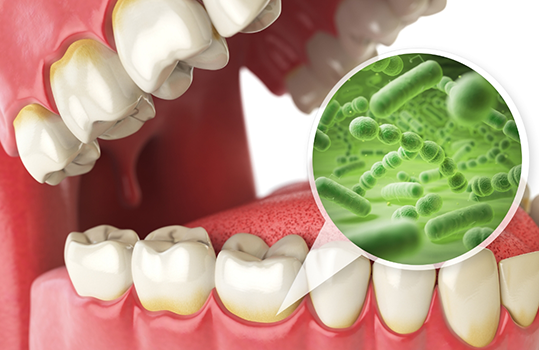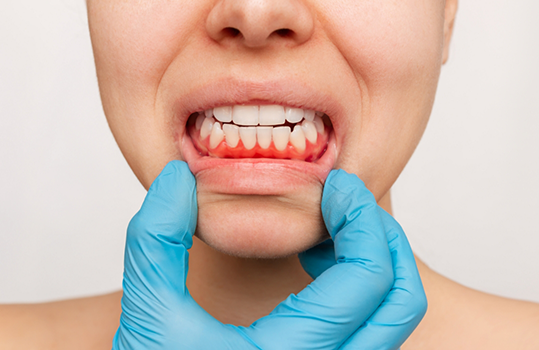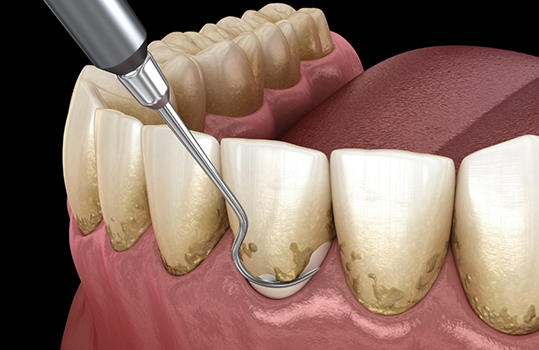Gum Disease Treatment Montague
Helping Infected Gums Heal & Recover

It's easy to neglect your gums while looking after your smile, especially since they can seem less important than your teeth. Still, these tissues do much to keep your mouth strong and functional; your oral health will suffer greatly if they get inflamed and infected. Thankfully, you can always count on our gum disease treatment in Montague should that happen. Keep reading to learn more or schedule a consultation with us.
Why Choose Montague Dental for Gum Disease Treatment?
- Soft Tissue Dental Laser Technology
- Gentle & Caring Dental Team
- Dental Insurance Welcome
What Causes Gum Disease?

As an infection, gum disease is caused by a buildup of plaque – a sticky film of bacteria that forms on your teeth. This film creates toxins when it isn’t removed (by flossing, brushing, and dental checkups), damaging your gums in the process. It’ll then trigger an infection below your gum line and create small pockets separating the gums from the teeth.
Gum disease has two distinct (yet related) stages:
- Gingivitis — Gingivitis is the early stage of gum disease, known for making the gums red, swollen, and prone to bleeding. It’s highly treatable and can often be reversed through daily brushing and flossing.
- Periodontitis — If left untreated, gingivitis will develop into a harsh infection called periodontitis. This form of gum disease permanently harms the gums and bones supporting your teeth. It can then cause teeth to become loose, fall out, or need to be removed by a dentist.
What Increases the Risk of Gum Disease?

The truth is that many factors can increase the risk of gum disease. Some of the most common ones are:
- Smoking or chewing tobacco products
- Diabetes
- Certain types of medication (steroids, anti-epilepsy drugs, cancer therapy drugs, etc.)
- Dental bridges that no longer fit properly
- Crooked or misaligned teeth
- Old or metallic dental fillings
- Pregnancy
Symptoms of Gum Disease

Since gum disease has two stages, it can have a wide range of symptoms. Make sure to keep an eye out for the following signs:
- Gums that bleed easily
- Red, swollen, tender gums
- Gums that have pulled away from the teeth
- Persistent bad breath or bad taste
- Pus between your teeth and gums
- Permanent teeth that are loose or separating
- Any change in the way your teeth fit together when you bite
- Any change in the fit of partial dentures
Scaling & Root Planing

Taken together, scaling and root planing are a two-step deep cleaning of your gums. The scaling part of the treatment removes plaque from your teeth, including their roots. In contrast, root planing smooths out the dental roots so the gums can reattach to them. This second step jumpstarts the healing process and reduces the risk of reinfection.
Antibiotic Treatment

We may suggest you get an antibiotic treatment after scaling and root planing. In that case, you would take special antibiotics to fight against your infection. These medicines should reduce your gum pockets over a few weeks or so. You’ll then wrap up treatment with gums that look and feel much better than before.
Can You Prevent Gum Disease?

Regular dental checkups and periodontal exams are crucial to maintaining the health of your smile. You don't have to lose teeth to periodontal disease, and by practicing good oral hygiene at home, you can significantly reduce your chances of ever getting this infection. Remember to brush regularly, clean between your teeth, eat a balanced diet, and schedule regular dental visits to help keep your smile healthy.
